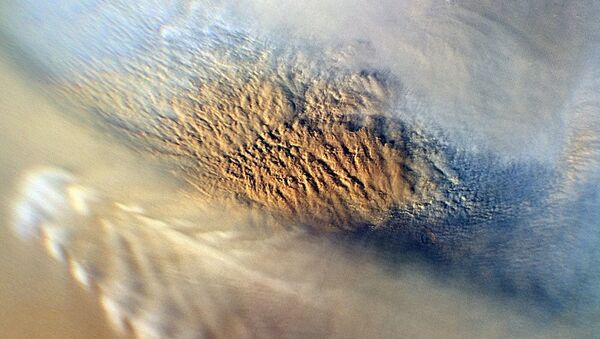وبحسب الوكالة، يتخطى طول الهوة السحيقة، التي تعتبر أكبر واد في المجموعة الشمسية، طول "الأخدود الكبير" على كوكب الأرض "غراند كانيون" بعشرات المرات على الأقل.
Maybe someday, humans will hike in Mars' Valles Marineris as they do in Earth's Grand Canyon.
— Planetary Society (@exploreplanets) January 8, 2021
Assuming you could survive, where would you go hiking on Mars? pic.twitter.com/usTYZes7jy
وتمتد الهوة السحيقة التي التقطت مركبة فضائية تابعة لـ"ناسا" صورا لها، على مساحة ربع محيط كوكب المريخ تقريبا.
Arizona's Grand Canyon may be awe-inspiring, but it's just "a scratch" compared to the Valles Marineris Canyon on Mars, new photos reveal. pic.twitter.com/aeDh2QQked
— USA TODAY (@USATODAY) January 6, 2021
ويطلق علماء الفضاء على الوادي اسم "Valles Marineris"، وهو أطول بعشر مرات من الأرض، وأعمق بثلاث مرات من أعجوبة أريزونا.
#Mars answer to the Grand Canyon: #NASA probe snaps spectacular images of the Red Planet's Valles Marineris - the largest canyon in the Solar System
— Evan Kirstel #CES2021 (@EvanKirstel) January 9, 2021
https://t.co/aSunvSmRfO pic.twitter.com/BfgViP6mtT
والتقطت الصور بواسطة مركبة "HiRISE" التي تقوم بمهمة تصوير بالغة الدقة فوق كوكب المريخ، بحسب "ديلي ميل".
Take a good look at Valles Marineris on Mars
— Anteros (@AnterosArrows) January 10, 2021
The canyons show a double curvature
What explains this? pic.twitter.com/TYzpfnBSuz
وتحمل المركبة كاميرا بدقة عالية جدا تعتبر هي الأقوى من بين الكاميرات المرسلة إلى الفضاء الخارجي، بحسب الوكالة.


